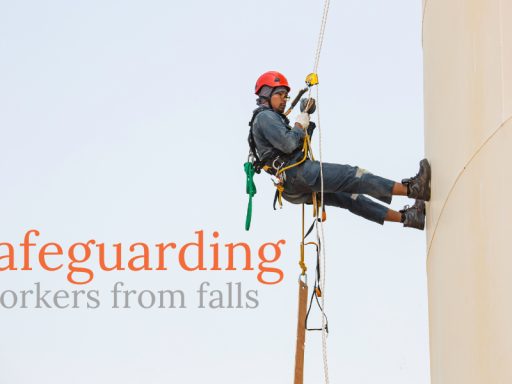Understanding the Issue
Falls from heights consistently rank as one of the leading causes of work-related injuries and fatalities. Whether it's a construction site with scaffolding, an industrial plant with elevated platforms, or even routine maintenance on rooftops, the potential for accidents is ever-present. However, with proper safeguards in place, these risks can be significantly mitigated.
Comprehensive Risk Assessment
The first step in ensuring fall protection is a thorough risk assessment. Identifying potential fall hazards and their specific characteristics is essential. This might encompass uneven surfaces, fragile roofs, open shafts, and more. Understanding these risks is the foundation upon which a comprehensive fall protection plan is built.
The Power of Personal Protective Equipment (PPE)
One of the most visible aspects of fall protection is personal protective equipment. Harnesses, lanyards, and anchors play a pivotal role in safeguarding workers at heights. Proper selection, fitting, and inspection of PPE are critical. Additionally, training in the correct use of this equipment is paramount.
Fall Protection Systems
Beyond individual PPE, fall protection systems are equally crucial. Guardrails, safety nets, and toe boards act as collective barriers against falls, providing an added layer of security for workers. These systems not only prevent falls but also alleviate the reliance on individual equipment.
Education and Training
Education is the cornerstone of effective fall protection. Workers must be well-informed about the risks associated with their tasks and the safety measures in place. Regular training ensures that employees are up to date with the latest safety procedures and equipment. Moreover, creating a culture of safety, where every worker is empowered to speak up and report potential hazards, is integral to preventing accidents.
Regular Inspections and Maintenance
Fall protection equipment is only as reliable as its maintenance. Regular inspections and timely repairs or replacements of equipment are non-negotiable. This practice not only adheres to regulatory requirements but also extends the lifespan and effectiveness of fall protection systems.
Legislation and Compliance
In construction and industrial settings, adherence to safety regulations is paramount. Compliance with regulations is not just a legal obligation but a moral duty to protect the workforce.
There is no one-size-fits-all solution. Each workplace has its unique challenges and requirements. Therefore, a tailored approach to fall protection, based on a meticulous understanding of the work environment, is imperative – and that is why at What No Safety we tailor our advice to suit your specific business’s requirements.
Remember, when it comes to safety, we can back you up across the full spectrum of risks, regulations and training. What No Safety are experts in the Health & Safety field and we take the well-being of your business, your staff, and your reputation seriously. If you need support in navigating your H&S business responsibilities, reach out to us.
abarrett@whatnosafety.co.uk | 01722 326 390

